Nate Resnick is the founder of Sourcify and it’s his personal mission to make sourcing products overseas simple and painless.
He started the business because of his own personal frustrations with Alibaba suppliers. Nate created a solution that is both a product management tool and a directory of pre-vetted manufacturers.
These manufacturers are personally sourced and approved by Nate himself. So we want to give you a behind the scenes look at how he started this awesome company from nothing.
Table of Contents
1. Can you start with some of your background, journey, and what are you currently working on?
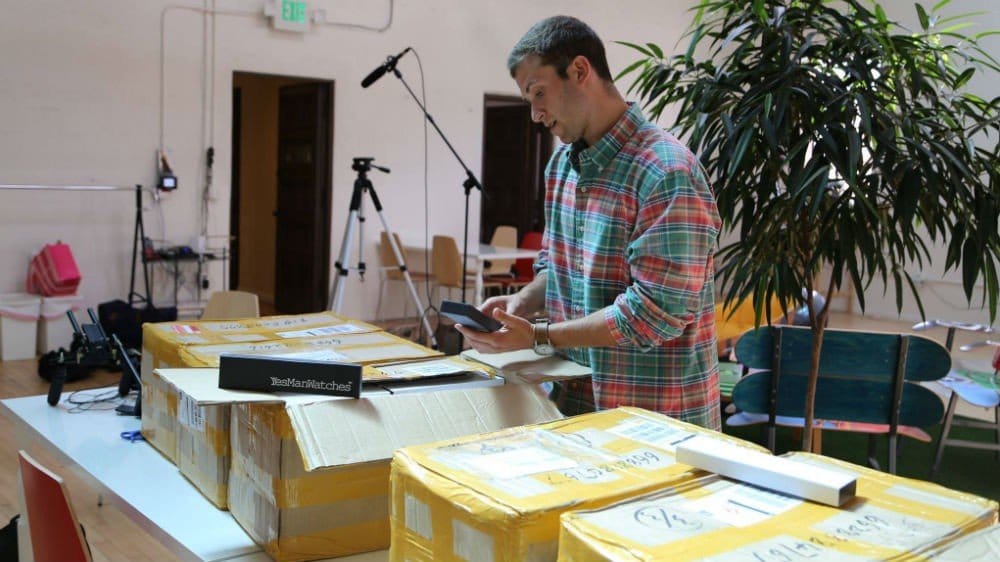
Hi, I’m Nathan Resnick, the founder of Sourcify. We’re the world’s fastest-growing Business to Business manufacturing platform. Sourcify helps thousands of companies source products around the world.
I decided to start this business because of the challenges I faced sourcing products.
Sourcify Fast Facts:
- Founded: March 2017
- Number of Employees: 12
- Investment: $2.9 MM
- Average Order Value: $30,000
Through college, I used to live in China and run a few e-commerce companies.
As those companies grew, other founders began to ask me how I manufactured my products in China. At the time, there was no efficient software solution in the manufacturing industry. So I started Sourcify to address the gap in the market.
In a span of 2 years we…
– Raised almost $3M from investors
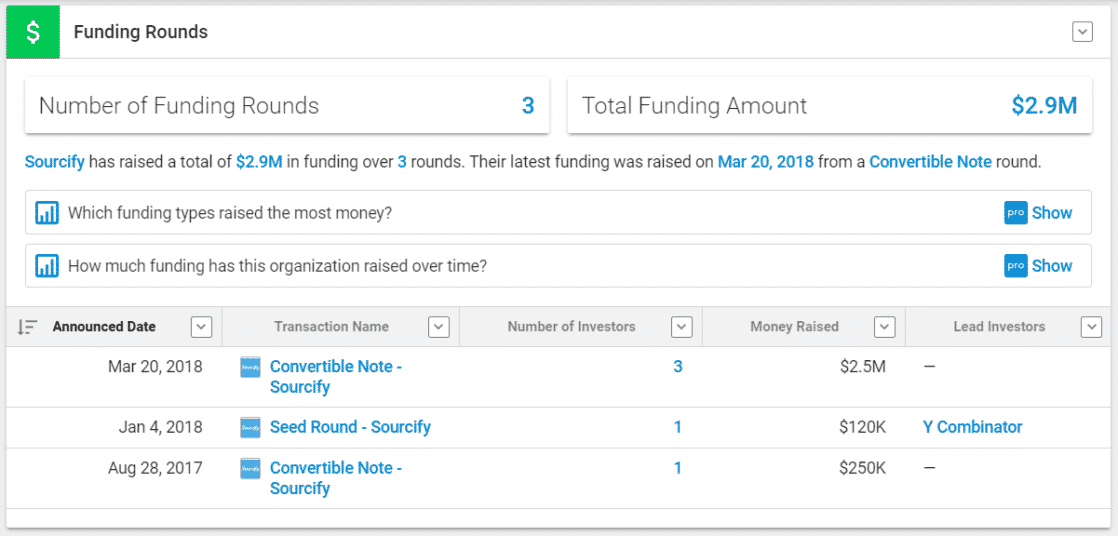
– Participated in Y Combinator winter 2018
– Produced millions of products in India, Vietnam, China, Mexico, Thailand, and the Philippines.
“The company started in my friends’ apartment helping other companies manufacture products. We didn’t start by building software, we started by sourcing products.”
– Nathan Resnick (Founder @ Sourcify)
One of the first businesses I ever started was selling Livestrong-style silicone bracelets for a margin in middle school.
I’d buy them in bulk to resell them. I’d like to think entrepreneurship came instinctively for me.
2. What motivated you to start Sourcify?
Sourcify started from the problems I faced running my own e-commerce companies.
By the time I had graduated college in 2016…
- I started 3 online businesses:
Yes Man Watches
Azula Watches
Cork Supply Company - Sold one of those businesses (Cork Supply)
- Raised tens of thousands of dollars on Kickstarter (some failed)
- Manufactured hundreds of different products in China.
- Almost made it on Shark Tank! (Funny $5 hack you should try)
But it was always hard to find the right factory to work with and manage production. Managing production runs takes thousands of emails and Excel spreadsheets. That’s why in 2017 I decided to create a much better solution.
Look:
The current method of manufacturing and launching a product:
- You have to find the right factory
- Then sample their product
- And get through a production run.
Most of the time, this process is all managed via email, Excel, and WeChat. I noticed business owners rarely update their Excel sheets. They’re supposed to track sample timelines or production completion dates.
After seeing this, I noticed there’s a big problem in the industry. The problem is that current sourcing methods are out of date.
Companies struggle to find reliable factories while having to manage their supply chain. That’s the idea that leads to Sourcify.
Sourcify is a software that allows a supply chain team to spend less time entering data on Excel. This allows them to streamline the way they communicate and control production. Production communication improves from an initial design to delivery at their warehouse.
3. How did you start building Sourcify?
The company started in my buddy’s apartment helping other companies manufacture products. We didn’t start by building software, we started by sourcing products.

I started becoming active in online forums and Facebook groups. My goal was to see who needed help manufacturing products they found to sell.
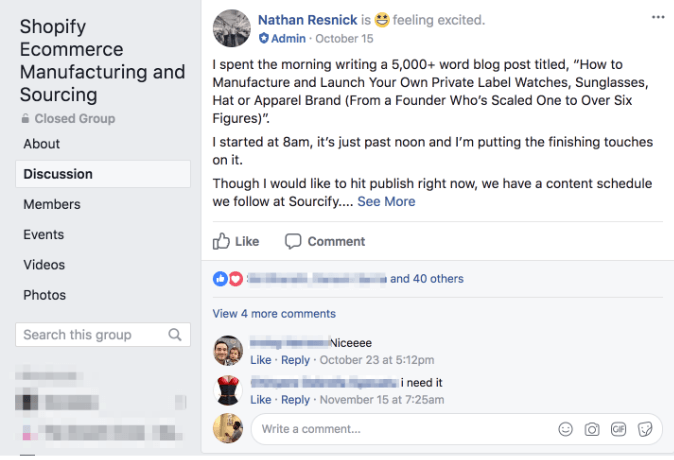
I’d message them, tell them my background in China, and ask if I can help them.
I started by charging $500 to source a product.
In the early days, there was no software. It was me sourcing products and charging as a service. We soon grew to a point where I couldn’t handle it all so hired other people. After some growth, we realized software would help improve our process.
We broke down our process and removed inefficiencies to bring a modern experience to the sourcing supply chain.
We’d already sourced hundreds of products and we knew the steps that went into bringing a product to life.
“Before we ever secured any funding we started this business by offering a service. There would be no software if at first we didn’t prove there was a demand.”
– Nathan Resnick (Founder @ Sourcify)
That gave us the confidence to start talking with our larger customers. We asked where they spent most their time in their supply chain.
Most companies have problems finding the right factories to work with or receiving updates on the production.
We decided to combine the two most common problems.
Sourcify clients have access to over 700 pre-vetted factories on the Sourcify enterprise platform. Sourcify has project management tools so teams can manage dozens of production runs at once.
4. How have you attracted users and grown Sourcify?
Our growth has stemmed from inbound content marketing and partnerships. We’ve grown from getting a few signups a week to dozens a day.
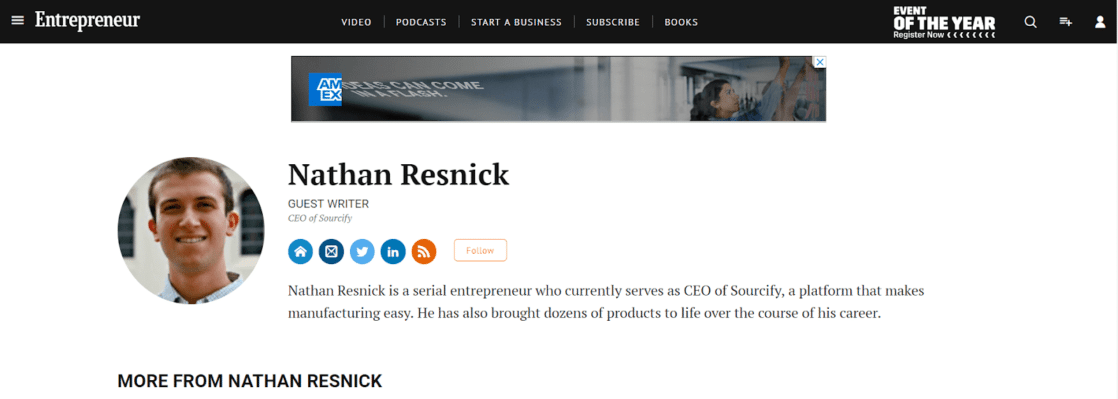
As a startup, you need to find which channels are most effective for your business. For us, it’s always been inbound marketing and a mix of direct sales.
People think only small businesses or individuals reach out through inbound. But we’ve actually had some of our biggest customers reach out to us first.
Growing from 0 – 100 Customers
For the first 100 customers we did 2 different things:
- We participated in different communities on Facebook and LinkedIn
- Went to different e-commerce events
In fact, we never sold anyone a service. We provided as much knowledge as we could. Then they’d often ask us what we did and if they could pay us to help them.
To succeed with finding clients in social communities you have to be active on them. Don’t go and take a promotional approach, give away as much help as you can. That’s exactly what I did.
Growing from 100 – 1000+ Customers
Scaling up to 1,000s of customers has been a much more detailed flow.
We map keywords for content and ads around the customer journey and analyze which ads perform best. Then we focus on partnerships with other software providers in the e-commerce world.
Bigcommerce has been a major one.
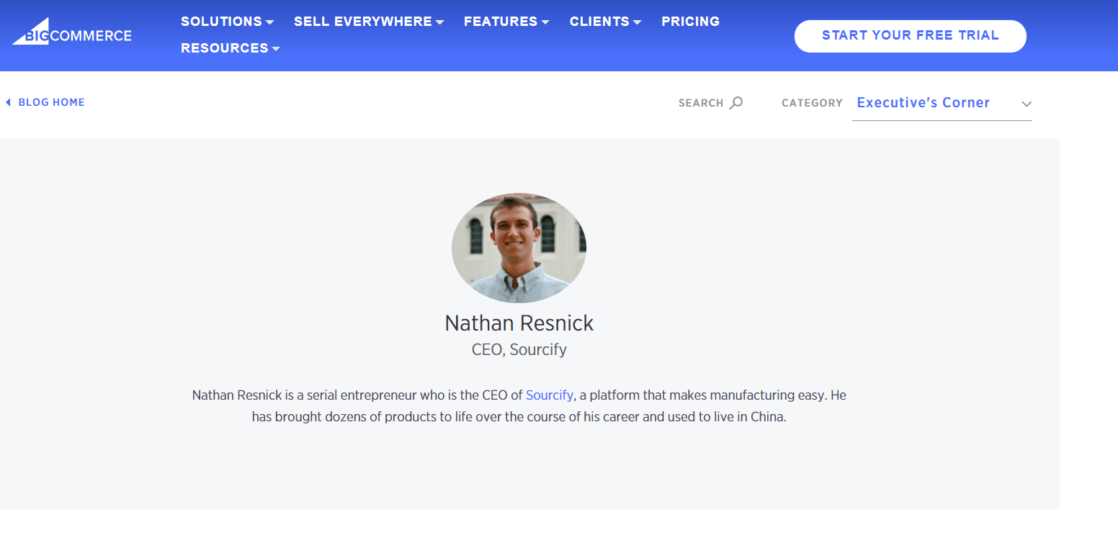
Also working hard on being featured in authority publications to give potential customers more social proof is huge.
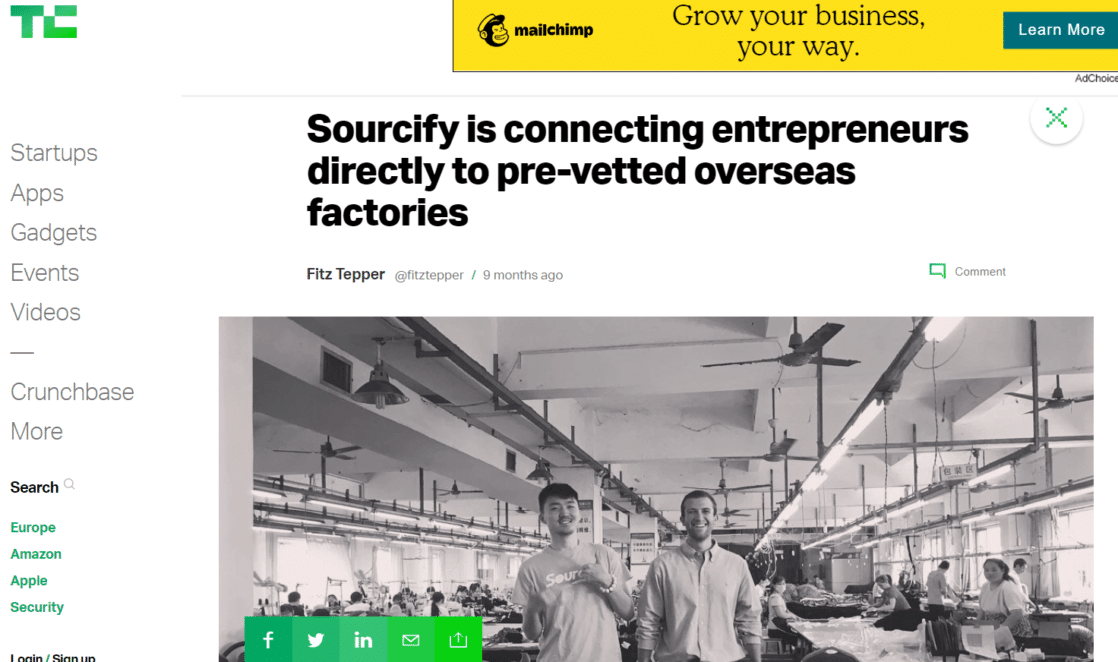
5. Looking back, what was a key decision you’re glad you made?
There are hundreds of ways to make money and it’s easy to get distracted by other successes. In fact, I know I could start a seven-figure e-commerce brand tomorrow if I wanted to.
What holds me back from doing that is thinking big. There are some incredible e-commerce success stories the past few years. But for me the impact I can have as a software company is much greater.
When people hear of an entrepreneur’s success, they often think it happens overnight. In actuality, these outcomes happen over an average of more than ten years. We’re in it for the long haul at Sourcify.
6. If you had to start over, what would you do differently? What’s the biggest challenge you’ve faced?
I’d say the biggest personal challenge is time management. As a CEO, there is always too much on your plate and managing your time becomes essential to success.
To better manage my time, I focus on completing my most important tasks first thing in the morning. I also rarely take meetings before noon.
If I had to start over, I’d make improvements at a much faster rate. You should be talking to customers daily and building what they want.
At one point at Sourcify, the development team spent five months building a software solution that customers didn’t want.
What we should have done and do now is wireframe, design, and then build. We show customers the designs before we build because it’s much easier to change a design than change code.
7. What’s your advice for first-time entrepreneurs?
Put a process in place to test fast and focus on the data. For us, this starts with wireframes. I sit down with our product manager and discuss if we should build out this feature.
I think about which business metric the feature helps Sourcify and our customers achieve. If we can’t come up with a solid reason, we scrap it.
If the feature is valuable to create, we then wireframe it (very rough mock-ups). From there, our designer will take those wireframes and make clean designs. This involves back and forth between me, our product manager, our lead developer, and our designer.
Once we agree on the design, we show customers the final mock-up we created before we start building it. I’ll invite 5-10 customers to a video conference to demo the new feature.
“customers love to be part of a new product build out. This enables us to get feedback before we develop and see how excited they actually are for this feature..”
– Nathan Resnick (Founder @ Sourcify)
If there’s little excitement we know one of two things happened.
1. Either our initial assumptions were off from a feature standpoint
2. Our designs are off
Sourcify’s Design Iteration Process
We go through three designs iterations before a design excites customers.
Once a few customers have shown excitement from designs, we’ll then start coding the new feature. The wireframe to design process takes around a week depending on the scope of the feature.
We’ll then spend a day or two showing customers. Building the actual feature usually comes along in two-week development sprints.
When you’re working with software, writing code is the most expensive part. If you can prove the value of a feature through wireframes or designs, you’ll save your company development hours. You’ll also be able to iterate much faster because you can design faster than you can code.
Don’t be afraid to pivot or make changes
I’ve seen entrepreneurs become stuck in their ways and scared to change. If something isn’t working, you need to pivot as fast as possible.
For a software company, it’s not finding a product-market fit. Or if you’re an e-commerce company it’s being unable to sell products you thought people would like.
You need to pivot.
At the end of the day, leave emotions off the table in business. This is much easier said than done, but if done right, you’ll be able to see results faster.
8. What are your goals for the future?
I get excited seeing people bring new products to life. If Sourcify continues to succeed then we’ll have helped produce billions of dollars worth of products.
As a company, we think big and would love to IPO one day, ten years from now.
9. Do you have favorite resources that helped you learn more that you can share with us?
To remain sharp, I stay spontaneous. Taking random fishing trips to Mexico or going sailing in San Diego on a Sunday afternoon. Personally, I try not to plan too far ahead so I can always be a part of the unexpected.
That mindset brings excitement professionally, as we’re always thinking like there is no limit. To expand your horizons, I’d recommend doing things you don’t usually do.
It could be signing up for a different type of workout class (I tried a spin cycling studio last week) or waking up one morning and going on a random hike.
I also read about one book every two months. My favorite books to date include Four Hour Work Week by Tim Ferriss, Zero to One by Peter Thiel, and Radical Candor by Kim Scott.
I go to about a dozen or so conferences a year. These events include the Sellers Summit, Sourcing Summit, Canton Fair, Magic, Traffic and Conversion, plus a few others.
10. You said you went through YCombinator last winter. What advice would you give to a potential applicant?
Number 1, apply. If you don’t give it a shot, you don’t even know what would have happened if you had tried. Most companies that get accepted have applied multiple times.
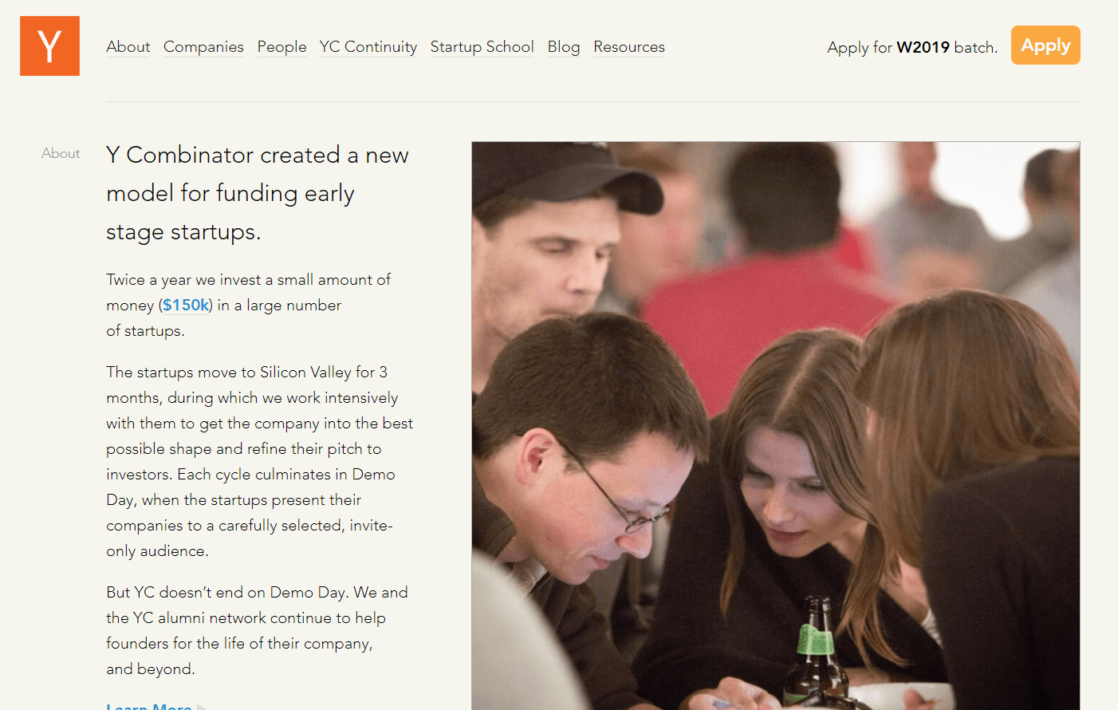
After you apply, you need to become an expert in what you do. If you think someone knows more about your industry than you, you aren’t in good shoes.
The key to getting into Y Combinator is having an advantage in your industry with the business you’re trying to build. This could stem from your thought process, tech, or team. What you need though is to establish the agreement that you’ll do whatever it takes to make it happen.
11. Where can we go to learn more about you and what you’re doing?
You can learn more about Sourcify at sourcify.com. I love chatting about e-commerce, branding, manufacturing, or product design.
If anyone has any questions or comments leave them below!

Hi Will, interesting article. No only do I need a source for my great new product, I need a marketing program complete with a full digital platform and a lot of other stuff that Nathan has already done well. from what I have read about Nathan he may be interested in providing these services to people like me who have the $ to move forward instead of languiousing (I miss spelled that) in the time consuming process of building a brand which is what we are supposed to be doing, is it not?